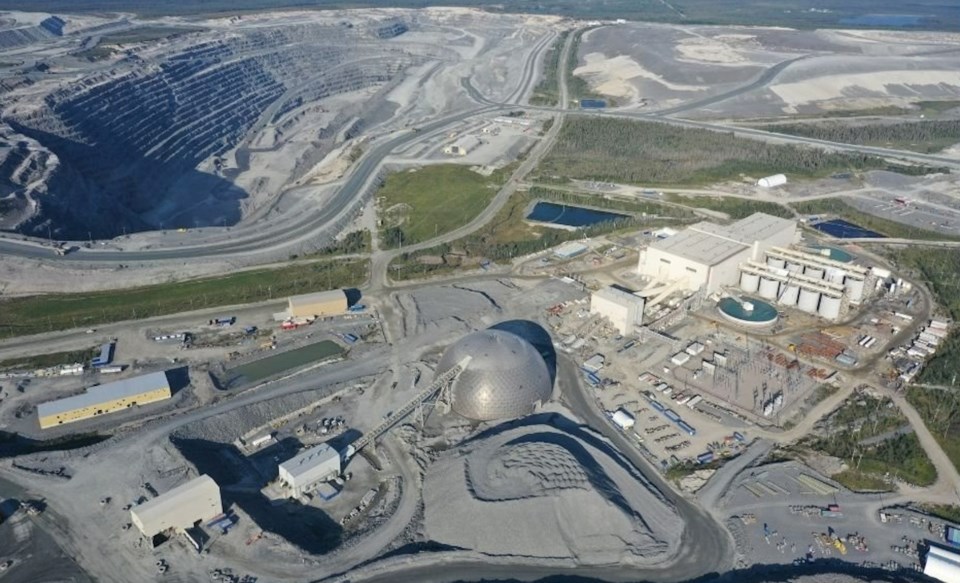There are more ounces to be pulled from the Abitibi gold belt, says Agnico Eagle.
The Toronto gold company maintains it can produce more than two million ounces out of this region of northeastern Ontario and western Quebec by 2025, an area where Agnico got its start in the late 1950s. Agnico has five mines within this 32,000-square-kilometre area.
In a Feb. 17 conference call with analysts, Agnico management said it believes 2023 is an exciting year to advance a pipeline of projects and start to expand production at its existing operations while keeping production and total costs down to a low of $800 an ounce.
The company released its 2022 fourth-quarter and year-end results on Feb. 16.
Despite some inflationary and operational challenges, Ammar Al-Joundi, the company's president and CEO, called 2022 a solid year.
Company-wide, Agnico posted record gold production. Payable gold production for the year was 3,135,000 ounces at production costs of US$843 per ounce, total cash costs were $793 per ounce, and all-in-sustaining costs were $1,109 per ounce.
Year-end gold reserves were up 9 per cent to 48.7 million ounces at its mines in Ontario, Quebec, Nunavut, Mexico, Finland and Australia. Much of that increase was attributed to significant increases at Detour.
In sizing up Agnico’s position in the Abitibi, Al-Joundi said “this is the best of organic growth,” taking into account the mining assets they own and the proximity of their regional processing hubs. Expansion at Detour Lake, 185 kilometres northeast of Cochrane, and the extension of the Canadian Malartic complex, near Val-d'Or, with the Odyssey Project, are considered key value drivers.
Sign up for the Sudbury Mining Solutions weekly newsletter here.
The area’s untapped gold potential combined with the infrastructure already in place offers the opportunity to mine an additional 500,000 in additional ounces in the Abitibi by 2030. And Agnico is looking at ways to achieve it with a minimal amount of additional capital expenditure.
“If you can bring a mine into production and not have to build a mill and not have to build tailings facilities, you’ve probably cut the capital cost of that mine in half,” Al-Joundi said.
Agnico made a couple of strategic moves last year to consolidate its grip in the Abitibi in completing the merger with Kirkland Lake Gold early last year and with the pending acquisition of the Canadian assets of Yamana Gold, expected to be finalized in March.
Heading into 2023, Al-Joundi said it’s “all about optimizing what we’ve got.”
Agnico Eagle has high hopes for the Detour Lake open-pit mine and opportunities to extend mining to the west and also head underground to reach some high-grade gold sections.
In 2022, Detour produced a record 722,000 ounces of gold. Agnico thinks it can be a one-million-ounce-a-year producer based on the “exceptional” drilling results. An initial underground resource estimate will be out by mid-year. A preliminary economic assessment to build a case for an underground operation could be posted sometime in 2024.
Exploration will continue while the company assesses upsizing the Detour mill’s capacity beyond 28 million tonnes a year to 30 million tonnes.
At the Macassa Mine at Kirkland Lake, construction work on a new shaft and ventilation system is complete.
Commissioning of the Shaft No. 4 production hoist started in December with final commissioning of the new material handling system expected to be finished this quarter. Late last year, two 3,000-horsepower fans were installed to upgrade the ventilation system. Work on the mechanical and electrical installation is underway. Commissioning of the fans is expected to start this quarter.
To address some excess mill capacity on the Quebec side of the Abitibi, at Canadian Malartic and the LaRonde Complex, Agnico is working on a plan that could involve some ore feed from Ontario.
There are a number of new mining opportunities around the Macassa Mine, the former flagship operation of Kirkland Lake Gold, with near surface deposits at Macassa, along with the nearby Amalgamated Kirkland (AK) zone and at Upper Beaver to the east in the Larder Lake area.
Macassa’s near-surface deposits are expected to go into production this year with AK headed for production in 2024.
Want to read more stories about business in the North? Subscribe to our newsletter.
Agnico is still studying whether to expand the mill at Macassa or ship the ore off for processing at the LaRonde Complex, 130 kilometres away.
Upper Beaver, Agnico said, has the potential to be a low-cost mine that could deliver annual production of 150,000 to 200,000 ounces. Initial production could start in 2029. A number of mining scenarios are being considered.
In keeping with company founder Paul Penna’s philosophy, drilling and exploration continue to be the lifeblood to longevity.
Agnico’s entire company-wide exploration budget for 2023 amounts to $328.4 million. About $33 million of that is earmarked for mine expansion drilling at Detour with a 171,000-metre program to evaluate underground mining and to get a better picture of its Saddle and West Pit areas. Another $3.8 million is earmarked for a 14,000-metre program to investigate the Sunday Lake Deformation Zone, an east-west trending belt around the pit.
At Macassa, $18.4 million is budgeted for 145,000 metres of drilling to increase and upgrade resources. The exploration focus is east of the current mine workings, along strike and at depth of the South Mine Complex and Mine Break in the direction of the former Lake Shore Mine.
That means extending an exploration drift a kilometre east of the No. 4 Shaft to provide access for drilling where there’s good potential to add more gold resources and reserves.
About $9.4 million is brewing set aside to do a compilation of all historic information in the Kirkland Lake camp to identify new exploration targets around Macassa and start drilling off some of those targets.


